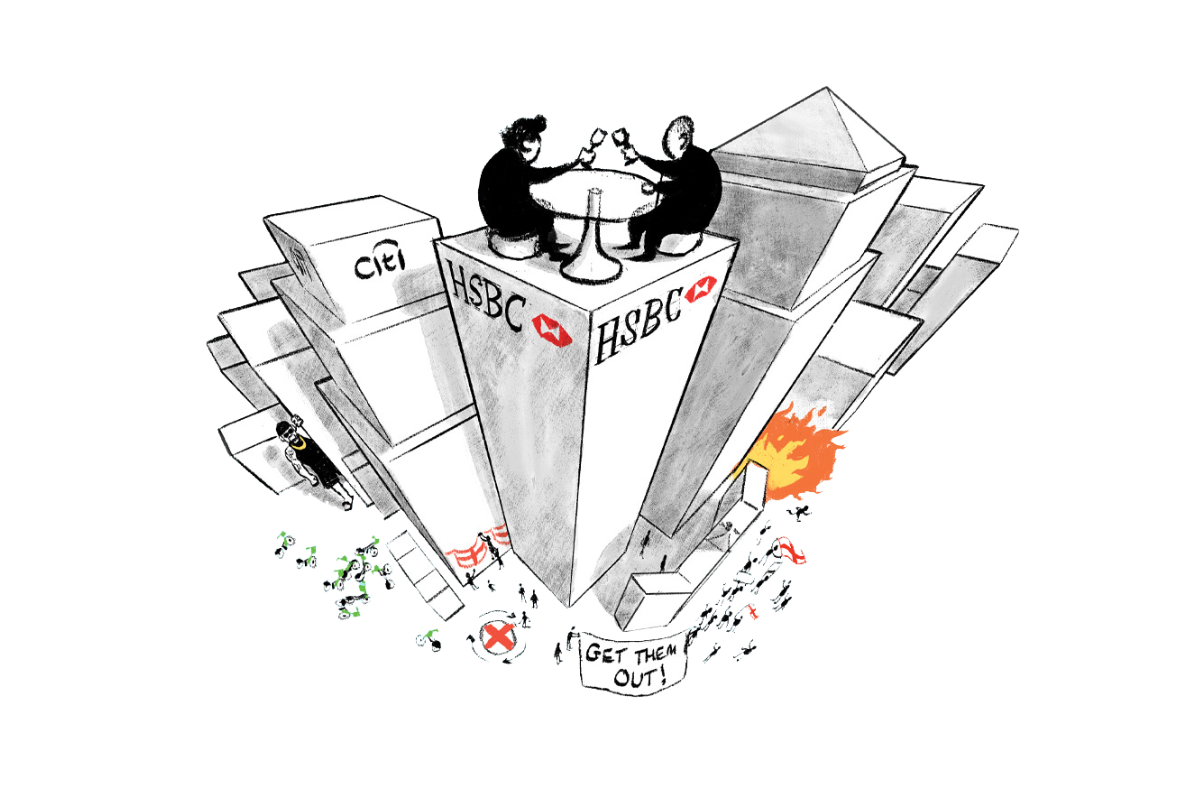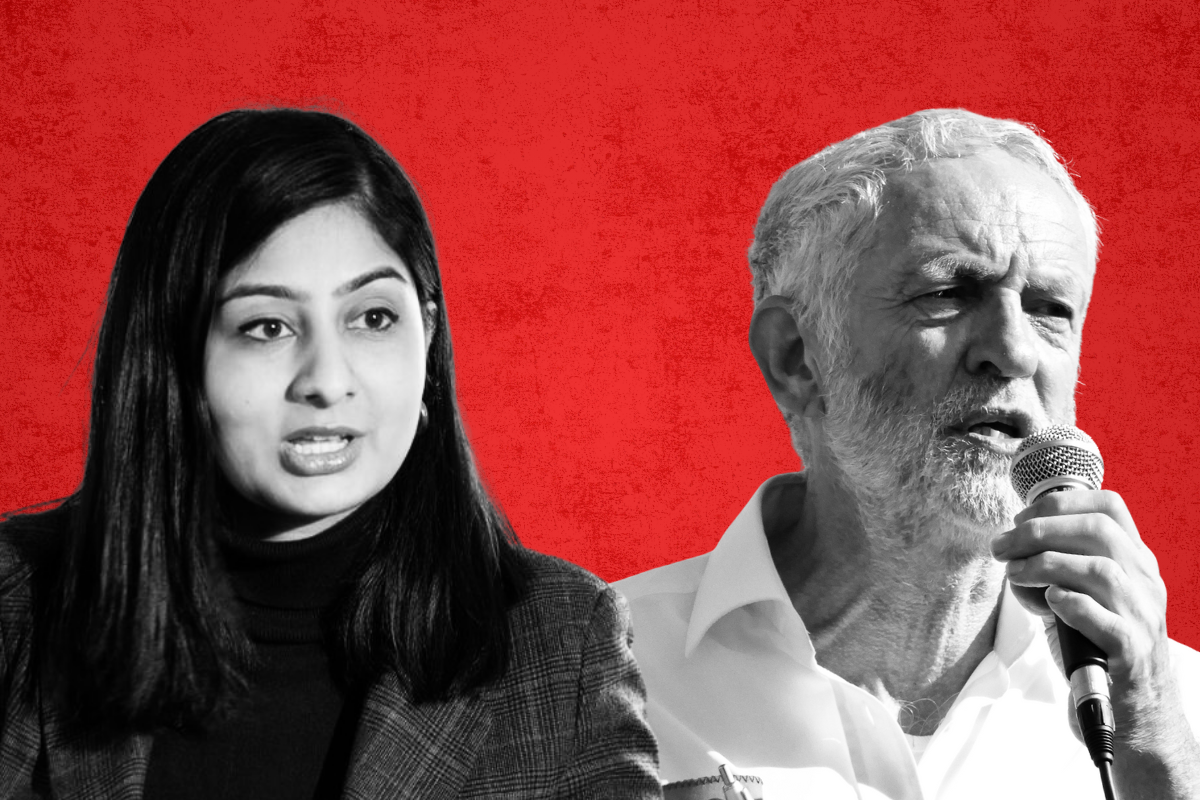This British perspectives draft document (2008), agreed on February 3rd,
has been issued by the Socialist Appeal editorial board as part of a
wide-ranging discussion about the likely development of events in
British society. Such a document is not a blue-print, but an attempt to
understand the underlying processes at work in Britain today, and how
these will be reflected in the class struggle. The document will be
discussed at the Socialist Appeal conference at the end of April.
World economy
 1. For the past five years the world economy has been in a boom. The boom has
1. For the past five years the world economy has been in a boom. The boom has
actually been quite vigorous, with annual growth rates of 5%. This obviously
raises the question as to whether capitalism is entering a new golden age like
that of the post-War boom. Our
answer to that is in the negative. If we look at the growth figures for the
advanced capitalist countries they show an average growth of 2.8%. These are
fairly ordinary figures for boom years, characteristic of the slower period the
world economy entered into after 1974.
2. What
is different is that the ‘emerging economies’ are growing strongly at 7.8% a
year. China has been growing at 11% and India at 9% since the end of the last
recession. We have to be careful here. It is not the case that the less
developed countries’ economies have all caught fire. We are mainly talking
about India, China and other Asian economies. The pattern elsewhere is much
more nuanced.
3. If
we strip out these ‘emerging countries’ (which are of course very important to
the world economy in view of India and China’s huge populations) it is business
as usual. Commentators are unanimous that the rapid growth of these economies
is not the motor of world economic growth.
The USA
4. The engine of world economic growth over
the past five years has been the American consumer. 4-5% of the world’s
population have been apparently responsible for 19% of the increase of demand
in the world economy.
5. Now
at first sight this is strange, since most American consumers are workers, and
working class incomes in the USA have been stagnant for the past thirty years.
The American consumer is spending more not because their income has increased,
but because their wealth has risen. For most Americans the only real wealth
they have is their home. This house is not just a roof over one’s head, but
also an appreciating asset that can be borrowed against.
6. We
have pointed out for years that rising house prices are a classic bubble. Now
the bubble has burst for all to see. US house price are in free fall. New house
building is at a standstill. All commentators agree that the stimulus to world
output given by the American consumers spending money they haven’t got was
bound to come to an end in 2008 in any case. The USA is forecast to grow at less
than 2% in that year.
Sub-prime mortgage crisis
7. And
that was before the sub-prime mortgage crisis burst in the summer of 2007. It
emerged that the banks were lending for mortgages to people with no income, no
jobs and no assets. We have no idea quite how widespread this recklessness
went.
8. Now
commentators as different as Greenspan and the IMF are saying it is fifty-fifty
as to whether the US economy goes into recession this year. At present we have
no way of knowing whether the sub-prime mortgage scandal will trigger a
recession and how deep-going its effects will spread. One thing is certain. If
the US goes into recession, so does the world.
Credit crunch
 9. The
9. The
next stage in the current financial crisis is the credit crunch. This means
that the banks become suspicious of one another, and either refuse to lend or
demand much higher interest rates than usual. Normally inter-bank lending is a
routine part of the financial system. Economists discuss how central banks
routinely adjust Official Bank Rate, the rate at which the central bank lends
to the high street banks. This bank rate is assumed to be the tip of a pyramid
of lending. The next level down in the pyramid, the rate at which banks lend to
one another is supposed to automatically adjust to the change from the top.
That is not happening. That means that the central banks are no longer in
complete control of the situation.
10. Why
has it all seized up? The sub-prime mortgages have been bundled up into
‘structured investment vehicles’ and sold on to other financial institutions.
They usually end up in the banks as a reserve asset. It is normal financial
practice under capitalism that what is a liability for one person (e.g. a
mortgage) can be an asset for another. After all it provides a steady income
stream. The problem is that millions of people are in the process of defaulting
on their mortgages. The banks have no way of knowing which SIVs will continue
to yield a revenue and which are duds. It is this uncertainty that has brought
about the credit crunch.
11. The
central banks of the world have decided to throw money at the national banking
systems to try to overcome the freeze in inter-bank lending. It is possible
that this could avert the immediate financial crisis. It is not certain that
this will lead to a ‘soft landing.’ How far have the financial authorities lost
control? Will it work? The situation is fraught with difficulties for world
capitalism. It should be emphasised that the current crisis is the result of bubbles
deflating. Re-blowing these bubbles is not a solution. It will not make the
problem go away. At best it will make things worse later on.
Northern Rock
12. It
was the credit crunch in turn that brought down Northern Rock. It is an irony
of capitalism that a bank that does not have a single sub-prime mortgage on its
books should be laid low by dodgy dealings in Florida or Pennsylvania. But that
is evidence that a world division of labour, and a worldwide spread of risk and
calamity, is governed by the global financial system. We are all dependent on
one another in the world market, but we don’t realise it till something goes
wrong. And things are almost bound to go wrong from time to time if the world
economy is interdependent but unplanned.
13. At
the time of writing we do not know what will happen to Northern Rock. But we do
know that a central domino from the financial system has been knocked down. We
don’t know how many other dominos it will take with it.
14. Northern Rock’s strategy was to borrow short
on the money markets to lend long to mortgage holders. This aggressive business
plan had won the management many plaudits in the past. Northern Rock grew fast.
Then the money markets dried up and the bank was left stranded. Huge sums of
taxpayers’ money have been lobbed at the wreckage.
15. Marx
noted in a footnote to Capital that, "The monetary crisis defined in the text
as a particular phase of every general industrial and commercial crisis, must
be clearly distinguished from the special sort of crisis, also called a
monetary crisis, which may appear independently of the rest and only affects
industry and commerce by its backwash. The pivot of these crises is to be found
in money capital and their immediate sphere of impact is therefore banking, the
stock exchange and finance."
16. There
is no doubt that the present crisis originated in money capital. It is the
second type of crisis discussed in the quote, rather than one triggered by a
crisis in ‘the real economy’. The question to be answered, and answered by
events, is what backwash effects it will have on a world economy which appears
to be on the verge of a recession.
 17. We
17. We
believe that the misselling of sub-prime mortgages is not a practice confined
to the USA. The level of repossessions in the UK has risen sharply since the
crisis broke out. And it’s early days yet. More unpleasant surprises lie in
store for finance capital in Britain. Commentators like Will Hutton have
emphasised that this is the most serious financial crisis in Britain for thirty
years. Let us not forget that the 1970s was a period of the most severe
economic crises since the Second World War, and one where these economic
problems posed revolutionary possibilities in this country for the first time
for decades.
18. It
is worth looking briefly at previous financial crises, like the Wall Street
crash of 1929. Contrary to the general impression, the stock exchange collapse
did not come out of a clear blue sky. The USA was clearly entering recession
from the spring of 1929, contrary to the situation with the present financial
crisis, which has not yet infected the ‘real economy.’ Car sales, a decisive
sector of the economy at that time, were already collapsing in the spring of
that year. But the subsequent years after 1929 were not ones of a spiralling
downward economic decline. For long periods the situation would appear to have
stabilised. Then people would wake up to find, for instance, that the Kredit
Anstallt bank had collapsed and the crisis had entered a new phase. So it is
likely to be in the coming months and years. The present crisis will travel
through different stages of difficulty and disaster.
19. The
UK in the ‘neoliberal’ era is a country with instability built into its
foundations. Yes, most people’s living standards have improved. But this has
been at the cost of both partners going out to
full time work, with child care as a constant problem, particularly for
the woman, with increased intensity of work, with overtime often unpaid, and
with a mountain of debt hanging over workers just to get a roof over one’s
head. Workers have survived so far. But it is like riding a bike. The real
problem is how to avoid falling off when the thing stops. The
UK is one of the most heavily indebted countries in the world. Whereas
Americans owe $1.42 for every dollar they earn, in Britain we owe £1.62 for
every pound earned. These debts that have kept capitalism afloat now lurk like
so many land mines below the surface as we enter a period of capitalist crisis.
Recession – when?
20. Economic
commentators have been predicting the next recession for 2008 or 209 in any
case. One of the problems in economic prediction is this interaction between
developments in the real economy and apparently accidental occurrences in the
world of high finance. Recession could be brought forward or made worse by the
present financial crisis, as some argue the ‘new economy’ bust in 2000 acted as
a trigger for the last recession in the following year.
21. So
economic developments are uncertain.
But the alarms are clearly ringing for the world economy, and for
Britain. What would recession mean for politics in Britain? It is elementary
that it would not produce an immediate outburst of revolutionary zeal. That did
not happen in the recessions of 1929 or in 1974. But a few years later there
were revolutionary repercussions from the Wall Street crash. The question of
power was posed in Germany, France and Spain as a result of complex processes,
of which the economic crash was at least in part responsible. Likewise the 1974
recesssion did lead to revolution in Portugal and a revolutionary situation in
Spain, though it cannot be regarded as the exclusive cause.
22. What
would a downturn in the next year or so mean for consciousness? It would pose a
big question mark over the ability of the British economy to sustain increased
living standards for the majority year after year. As we have indicated,
workers in Britain live a highly geared life, just managing to balance the
stress of life at work with the
compulsion to get head over heels in debt in order to pay for a house and to
keep a family. For many, the repossession of their home or getting stuck in
negative equity or losing their job would be the last straw. For all, it would
be a warning. The mood would be one of profound insecurity. Insecurity can turn
into fear, or it can turn into struggle. A recession will change the terms of
the debate. It could actually cause millions of people to call into question
the basic principles of the ‘neoliberal’ phase of capitalism that has dominated
their lives since 1974.
British economy
Relative decline halted?
23. In
the past we talked about the special crisis of British capitalism. This
analysis was based on Trotsky, particularly in his book Where is Britain going? It applied the notion of combined and
uneven development to the first capitalist nation. From the 1920s Britain was
perceived as falling behind its rivals. By the 1960s Britain was regarded as
‘the sick man of Europe.’
Has
this special crisis disappeared? Yes and no. The crisis and relative decline
was essentially a problem of the manufacturing sector. But this sector has severely
contracted, at least in view of its former glory. So the problem of the
relative decline of British manufacturing industry has been ‘solved’ by its
virtual extinction! Formerly the ‘workshop of the world,’ Britain began
deindustrialising earlier and more drastically than the other major capitalist
powers. Indeed the Tories raised the slogan in the 1980s that ‘manufacturing
doesn’t matter.’ They did so partly to cover the wanton destruction to industry
caused by the mass unemployment of the 1980s, unemployment that their policies
(and huge policy mistakes) had made worse.
24. Traditionally
the relative decline of British capitalism expressed itself as a balance of
payments crisis, of an excess of imports coming into the country, over and
above our exports being bought by foreigners. Under a fixed exchange rate
regime, this would lead to a run on the pound to pay for the excess of imports
over exports, and the government would be forced either into a humiliating
devaluation or deflation of the whole economy. As we shall see, this problem of
uncompetitiveness has not gone away.
City and industry
 25. On
25. On
the other side of the coin from manufacturing the City of London has emerged
apparently victorious in its contest with New York to become the world’s
leading financial centre. The UK commands 20% of international lending compared
with America’s 9% share. This is a blessing and a curse to British capitalism.
On one hand hundreds of thousands are employed in the City and Canary Wharf on
financial transactions. Though we all know about the £8bn in City bonuses paid
out in Christmas 2006, most financial service workers have no share in this
glitz and lead mundane working class
lives. The majority work in high street banking, not the City.
26. ‘Invisibles’
are a massive earner of foreign currencies, partly filling the black hole in
the balance of payments left by the collapse of manufacturing. These are
services. For the most part they are financial services. ‘We’ make $1trn a day
from derivatives trading. On the other hand, the success of the City has
partially covered up the catastrophe occurring in the regions dependent on
traditional manufacturing industries to make a living.
27. Exchange
rate policy has been a traditional area where finance and industrial capitalism
have clashed. Exporters of manufactured goods tend to favour a depreciation of
sterling which makes their goods cheaper abroad. The City supports a strong
stable pound so that foreigners can have confidence in leaving their money
here. Brown has taken the City’s side.
28. He
has followed a policy of malign neglect in relation to the exchange rate, a
policy instrument that remains available to finance ministers even in a ‘neoliberal’
age. The rate of exchange can be manipulated by using interest rates. In this
he continues his short-sighted and stupid policy of keeping silent when the
Tories pegged the pound into the Exchange Rate Mechanism in 1990 at what was
clearly an over-valued rate. Sterling has clearly been over-valued for most of
the past ten years. It has actually been higher for nearly all the 1997-2007
period than it was when it was lodged in the ERM from 1990-92. So a million
manufacturing jobs have gone under this Labour government. The overvalued
exchange rate has made it very difficult for British manufactures to compete on
the world market.
29. The
result has been a balance of payments problem that would have been regarded as
catastrophic, and would have brought down governments in the 1960s and 1970s.
The deficit on goods with the rest of the world in 2006 was £60bn, amounting to
more than 5% of GDP. A surplus on invisibles (services) brought the deficit
down a bit to 4%. The only thing that prevents a vast gulf opening up beween
what the world gives us and what we give to the world is earnings on
investments overseas. British capitalism has become a rentier economy once
again, as it was in the nineteenth century.
30. More
evidence that the prolonged upswing is unsustainable comes from the statistics
on consumer debt. Since Labour was elected, consumer credit has gone up by 65%
and mortgages by 94%. Over the same period real earnings increased by an
average 22.4%. Economic growth was fuelled by people spending money they didn’t
have. When the recession comes and many of these people find themselves out of
a job, there will be major repercussions throughout the economy.
Manufacturing still matters
 31. It
31. It
is clearly impossible for a nation of sixty million people to all make a living
in the world by playing about with coloured pieces of paper in the City. New
Labour’s notion that the economy can move into a new era where all jobs are
based on knowledge and design skills is clearly also a fantasy. One reason, of
course, is that their skills training programme is a joke. Another is that it
is very difficult to maintain and hone design skills if you’re not actually
making anything. Our surplus from other countries in design industries halved
from £1.4bn in 2001-2 to £700m in 2004-5 for that reason.
32. We
discuss later the predominance of new employment in what is called the service
sector. What most of these activities have in common – child minding, nursing,
driving people around Salford in buses – is that they cannot be exported. They
are not internationally tradeable. Generally,
manufactures can be sold abroad for goods we want. It is therefore disastrous
to let industry go to the wall. Such is the government’s commitment to
neoliberalism, that it has made no attempt to protect or even encourage British
industry. If manufacturing is dying, that must be the will of the market, and
the will of the market is the will of God!
Growth and the government
33. The
economy has been growing continuously for more than ten years. Two and a half
million extra jobs have been created. The government has admitted that 1.3
million of these went to immigrant workers. The economic problems of the past
seem to many workers to be a distant memory. This situation has led Brown to
boast about an ‘end to boom and bust’. Britain slowed down but did not actually
go into the recession of 2001-3 that hit the rest of the world. This long
period of upswing is bound to have an effect on consciousness. In fact, from a
historic core rate of growth of about 2 ¼%, over recent years expansion has
been moving a little faster at about 2 ¾%. The principal reason for this
acceleration seems to be the huge wave of migration from eastern European
countries that have gained accession to the EU. We shall discuss the political
implications of this change to the British workforce later in the document.
34. What
has government policy done to create this benign economic environment? The
answer is – nothing. Capitalist governments have two policy levers at their
disposal – fiscal and monetary policy. Fiscal policy relates to government
taxing and spending. For the first years after 1997, Gordon Brown stuck to very
tight Tory public spending limits. His predecessor Kenneth Clarke, who left him
this straitjacket as a little parting gift, admitted he thought the targets
were impossible. Later Brown loosened the reins and spent serious money on the
health service in particular. In fact 89% more was being splurged on the public
sector than in 1996-7, the last financial year the Tories were in charge. This
should have transformed the quality of public services. But the perception is
very different. Certainly the big queues for treatment under the Tories have
mainly disappeared. But anyone who has visited a hospital recently can see that
resources are still being withheld. The problem here was that a large amount of
this cash was drained away by the fraud of PFI.
35. The
fat years are now definitively at an end. The government has called a halt to
expanding public spending. It is time to rein it in. This is in advance of a
crisis in the real economy. Of course cutting state spending will make the
crisis worse, when it comes. Brown is also trying to cut the living standards
of public sector workers, using the threat of inflation as an excuse. It will
come as a surprise to many workers that the rising price of bread, of milk and
of petrol are caused by above inflation settlements to nurses and teachers,
particularly as they have already been putting up with very moderate wage
settlements.
36. What
did Brown do about monetary policy? In the first week of power in 1997, he
handed control over to the Monetary Policy Committee of the Bank of England. A
major lever of government policy under capitalism was delivered over to a bunch
of pointy heads and wonks. So,
if the economy has behaved well over the past ten years, the government can
take no credit for that.
37. That
is not the way it will be perceived by the mass of the population. As long as
the economy delivers improved living standards to the majority of the people,
active political involvement is likely to remain low. As we have argued above,
recession is coming to the world and so to Britain sooner or later.
Industrial perspectives: background
issues
Proletarianisation
38. The
most significant trend in the world today is proletarianisation. Global head
counts are hard to come by and figures come with a time lag. The last estimate
of numbers seems to have been by Filmer
for the World Bank in 1995. He worked out there were 880m workers in the world.
Since we know the ‘South’ has been industrialising fast, there are almost
certainly now one billion humans who make their living exclusively by working
for a wage. Together with their families, they are an increasing majority of
the world’s workforce.
39. Filmer
estimated the peasant population at one billion in 1995. There continues to be
a steady flight to the towns, so this number must have gone down since. It is
probable that there are now more workers than peasants in the world’s workforce
for the first time ever.
40. At the same time there were 480m described as self-employed. Most of these
live in the towns. Their jobs are often casual and precarious. It would be
wrong to characterise them as lumpenproletarians (to use Marx’s expression in
the Communist Manifesto), though the
ever-growing shanty towns and slums on the outskirts of all the cities of the ‘third
world’ pose the prospect of growing a hardened lumpen layer over time. But the
vast majority of these people aspire to regular full-time work, to the status
of proletarians.
Deindustrialisation?
41. When
we discuss deindustrialisation, we need to take the long view of the processes.
In 1900, according to Feinstein, 47% of the labour force in the OECD (rich)
countries was engaged in agriculture. Britain was an exception in this regard,
as it was already fully industrialised. A hundred years later the numbers
involved in farming had fallen below 5%. Most of these workers moved into
manufacturing in the first instance. The numbers involved in farming fell, of
course, because productivity rose there and many fewer workers were needed to
feed the population. The process of rising productivity in both agriculture and
industry meant that, over the course of the century, workers flowed first from
agriculture into manufacturing; while later others were migrating out of
manufacturing into the service sector. Feinstein reckons that about 30% were
involved in industry at the beginning of the century and the same proportion at
the end. So the other net result – that the service sector went from 25% to 67%
over the course of the twentieth century – is actually the result of several
conflicting economic trends.
42. Feinstein
points out that a 3% annual growth in GDP, which is about average for most
countries in the OECD for the twentieth century, will over 100 years produce a
seventeen-fold increase in income. How is this extra income spent? Since the
industrial sector has been at the cutting edge of rising productivity, the
relative price of manufactures has fallen, and people will spend a smaller
proportion of their income on them, while enjoying vastly more material
prosperity in terms of manufactured goods than people a hundred years ago.
43. There
has been much discussion of deindustrialisation in the advanced countries even as the global south industrialises apace. We need to
be clear what this means and what it does not mean. Feinstein shows that, for
the OECD (mainly rich) countries, manufacturing output increased faster than
national income over the period 1950-1995, with the sole exception of the USA.
Manufacturing has become relatively more important in their economies. The
advanced capitalist countries have been producing more manufactures, despite increased competition
from the less developed countries in this regard.
44. But,
because of the dramatic increase in manufacturing productivity, it takes fewer
and fewer workers to produce these goods. If a smaller number of workers are
producing the same amount of manufactured goods, then each manufacturing worker
has potentially more power to paralyse profits. This is not only true of
industrial workers. The sharpened division of labour and the development of
stock control programmes such as the just-in-time system means that relatively
small groups of workers (as in rail and road transport) have the power to
paralyse capitalism and cause an enormous loss of profits in a short period of
time. And, when workers with this clout have showed themselves prepared to use
it, they have made gains and the unions have gained members. The message is
loud and clear – militancy pays.
45. But
there are other sectors where productivity has not risen at all, sometimes over
centuries. Pulling pints in a pub or looking after children may be two
examples. The service sector is labour intensive. In consequence a relatively
larger proportion of the population is likely to be employed in these sectors,
as less are employed in manufacturing. The shifts in the pattern of employment
caused by this slewed productivity growth are bound to produce significant
changes in trade union membership and organisation, and in the consciousness of
the different layers of the working class.
Manufacturing and services
46. These
expanding areas of employment are generally referred to as the service sector
in the official statistics. Production is divided into primary (agriculture and
extraction, such as mining), secondary (industry) and tertiary (services). The
service sector is not a Marxist term. In reality it is a ragbag of
contradictory elements. Transport workers such as bus and train drivers, are
counted as part of the service sector.
In reality they know they are working class and most people would instantly and
unhesitatingly identify them as such.
 47. The
47. The
term service sector is a hodge podge. Nurses, teachers and other useful members
of society have little in common with bond dealers or corporation lawyers, who
in any case are not workers at all. Yet both groups are described as working in
the service sector. Some differences
between service and manufacturing workers seem to be the product of statistical artefact. Workers at Gate
Gourmet make convenience foods in the form of aircraft meals. They are
manufacturing workers. Workers in McDonalds, who fulfill a very similar
function, count as service workers.
48. The
service sector is traditionally harder to unionise and it is easy for
management to hire and fire, in general because of the low skill base and the fact that they have no legal rights
for the first year of employment (two years under the Tories). The other side
of this is that workers in such jobs have no loyalty to the firm, no commitment
to the industry and drift from job to job. Sectors like the NHS and local
authority workers are exceptions with a long tradition of unionisation. The
fact that most health workers have taken the time to acquire a scarce skill,
and in doing so have shown a commitment to the health service as a long term
career, means they are more inclined to organise to defend their wages and
conditions. Even if they have not gone through a formal education process,
public sector workers have usually received in-house training, so they cannot
be regarded as casual and unskilled. That enhances their bargaining power with
their employers.
49. We
now have not many more than 3 million workers in manufacturing compared with a
labour force of 29 million. It should be noted that millions of workers in
energy generation, construction, dockers, forklift drivers and other
‘distribution’ workers in transport, all hospital workers and virtually
everyone in the public sector are excluded from the manufacturing sector. But
most of these are seen as traditional working class occupations. There are
1.75m transport and communication workers, 6.7m in shop and distribution,
hotels and catering (are female shop assistants in Woolworths middle class?),
and 7m in health and education (hospital ancillaries heavily outnumber doctors
in health).
50. Transport
workers are even productive workers in Marx’s sense; that is, they produce
surplus value for their employers. Note that Marx does not narrow the
definition of productive labour to those who make things, as Adam Smith did.
Call centre workers are working for a boss’s profits, so they are productive workers
in that sense. There are nearly a million such workers. Workers who write
computer programmes are also producing surplus value.
The changing working class
51. In
fact the distinction between productive and unproductive labour is not
important to the question of who is
working class. The essential definition is – how do you make your living? Have
you any alternative to working for someone else? What you actually do all
day is irrelevant.
52. Of
course there are contradictory and transitional phenomena. The ruling class
have always needed to work through stooges to do their dirty work for them,
like all previous ruling classes. After all they have better things to do than
supervise the working class! In a sense a stooge’s relationship to the means of
production is irrelevant. If they have decided to become stooges and support
the other side, the fact that they make their living through working for a wage
is neither here nor there. We can use the contradiction between their
ideological commitment and the way they make their living to neutralise some in the course of the struggle.
Blue and white collar
53. One
important distinction between class and caste is that individuals can move
between classes. That does not in fact obliterate class differences; it
strengthens them. So we also have to look at the aspirations of workers, and
whether they can fulfill these aspirations. Edwardian ladies of leisure may
have taken up typing for a few years before entering into a well-appointed
marriage. They never regarded themselves as members of the working class while
they were slumming it. It goes without saying that their consciousness was a
million miles removed from that of twenty-first century clerical workers in the
private or public sector. For the vast majority of us there is no way out from
wage slavery except socialist revolution.
54. The
difference between blue and white collar workers was important at the beginning
of the last century, with the beginnings of scientific management and the
emergence of a managerial bureaucracy. These black-coated workers, as they were
called, had markedly superior social status to those on the shop floor. In
addition these layers were recruited from the old middle class. By and large
they lived in different areas from industrial workers and had no social contact
with them outside the world of work. Such people would often have investments
to fall back on and kept servants. They could also be expected to share the
outlook of the ruling class. Otherwise they would be unable to carry out their
supervisory tasks satisfactorily.
55. How
different now! The remorseless grinding down of the pretensions of the
so-called middle class has been a feature of capital accumulation over the past
century. Teachers may have regarded themselves as ‘different’ a hundred years
ago. No more. They live in the same kind of housing stock in the same streets
on the same sort of wage level as other workers. They have responded to their
perceived change in status in a positive way by making their occupation one
with a relatively high level of trade unionisation – in other words they have
acquired working class consciousness.
56. Millions
of white collar workers now work in conditions not fundamentally different from
those manufacturing workers put up with. They are often in giant clerical
factories, and their pace of work is measured relentlessly, often by the very
computer that is their basic work tool. This has been the most significant
change of the last century, that the so-called middle class has found its place
in the labour movement. Regarding oneself as middle class today is actually a
question of false consciousness based on the lack of effective trade unions at
work and the illusions created by home
ownership. Though consciousness lags, the old nineteenth century type middle
class has ceased to exist..
57. The
petty-bourgeoisie, who both work for a living, and own their own dwarfish means
of production, is little more than a distant memory. The peasantry had been
destroyed in this country long before
Marx wrote Capital. In the countryside a tripartite class structure held sway,
consisting of landlords, capitalist farmers and agricultural proletarians. Farm
workers in Britain have always been extraordinarily difficult to organise. In
the towns craft workers have long ago been displaced by mass factory
production, except for isolated professions making luxuries. Their last hiding
place, as small shopkeepers, is now being dive bombed by the supermarket
express and metro convenience stores.
Working class consciousness
58. The
definition of class is not a question of lifestyle, though it is true that
workers who are conscious of their identity may share a certain lifestyle as
they live together in a working class community. Certainly a worker of the Chartist
era would not recognise wearing a cloth cap and keeping a whippet (long
regarded as the parody of working class identity) as a badge of being working
class at all. In any case the problem is that the development of capitalism
tends to destroy settled working class communities, and their lifestyles with
them. And capitalism is changing much faster now than it was in the time of
Queen Victoria. In the nineteenth century, and for much of the twentieth
century, the working class lived in separate homogeneous communities. The
reason they no longer appear to do so is that they are now the overwhelming
majority of the nation. They are between 80% and 90% by any criterion, with all
the qualifications about intermediate layers and people in transition between classes.
59. Consciousness,
of course, is not a direct reflection of social being. In general the ruling
ideas of any era are the ideas of the ruling class. Workers come to class
consciousness through struggle. The working class is many-layered, not a homogeneous
lump. Occupational change produced by changes in capitalism is part, but only
part, of the way consciousness changes. For long periods consciousness lags
behind conditions. Then, in the course of struggle, it can take gigantic leaps.
Over the last twenty years of government policies consciously designed to
promote the idea that individuals can get ahead as individuals rather than
advancing together in collective organisation, working class consciousness has
become blurred.
60. But
it is important that a growing 68% of us regard ourselves as ‘working class,
and proud of it.’ Interestingly, a Guardian poll found that 56% of 25-34 year old regarded themselves as
working class compared with 48% of 55-64 year olds. So much for working class
consciousness dying out.
A history of struggle
 61. The
61. The
general pattern of the industrial class struggle in Britain has been of a
repeated cycle of a buildup of grievances and discontents without an outlet, then
an eruption of anger and struggle, and a relapse as the movement sinks back,
exhausted for the time being.
62. Occupational change is a permanent
feature of capitalism. In the past there was a deep division between craft
workers (often with a five year apprenticeship) and mass production workers.
The unskilled were regarded by the existing craft unions as unorganisable.
Sometimes developments appear to stagnate, perhaps for decades, and then there
is a leap of consciousness with the opening up of class struggle. 1889 was the
year when labour ceased what Engels called its ‘forty year sleep’. In that year
accumulated changes led to the successful organisation of unskilled workers
such as dockers and gas workers. That was also the beginning of the modern
giant general unions. In fact trade union membership, the level of struggle
and, apparently, class consciousness then fell back after 1889, though not to
the 1888 level, till the next labour upsurge in 1909-14.
63. That
has been the repeated pattern: sections of the working class regarded as
‘backward’ and unorganisable moving into struggle, followed by a partial
relapse. There was another upsurge after the First World War, possibly the
biggest of the lot, then, after the defeat of Black Friday, a period of the
classes measuring one another up before the General Strike of 1926.
64. It
is also the case that a lack of strike action is not necessarily evidence of a
defeated working class. The General Strike of 1926 was the most serious defeat
the working class has ever experienced industrially. The formation of the National
Government in 1931 and the mass unemployment that peaked in 1932 were all part
of a period of defeats. But the years before the Second World War were ones of
revival in some parts of the movement, for instance among armaments workers and
bus drivers (driving was then a scarce skill). Certainly the labour movement
was continuing to advance throughout the 1940s and 1950s. Strike statistics
were low. This is because disputes were often short, since management settled
at once to keep the wheels turning and the profits rolling in. Strikes were
almost always unofficial, as the monolithic right wing bureaucracy acted
throughout as a fire hose. And often they involved small groups of workers.
Leapfrogging differentials was a common pattern of class struggle in those
years. This means that assembly line workers would put in for parity with craft
workers, who would then begin negotiations to maintain their differential. This
sounds sectional. It is not the ideal way to bargain for the interests of the
workforce as a whole. But it was often treated as a kind of game by the
workers, aimed at getting higher wages all round. It seems there was not one
national official stoppage from 1926 through to the bus workers’ strike in
1958.
65. The 1960s and 1970s were one of the stormiest periods in
the history of British capitalism. The setting was the relative decline of
British capitalism becoming more acute as the world moved towards recession.
What was significant was not the fact of recession, but the way it illuminated that
an era of prosperity and relative class peace was coming to an end. Workers
were forced to come to an understanding that they had to fight to maintain the
wages and conditions they had gained over the previous period of post-War boom.
The ‘soft’ side of the ruling class was shown to be a mask as the boss class in
Britain and elsewhere began to prepare private armies and strengthen the forces
of the state for use against the working class.
66.
Revolutionary and counter-revolutionary possibilities began to open up. The
1970s were a decade of struggle. The miners’ strike of 1984-85 was almost the
last act in a period that was one of unprecedented turmoil and change. It is
not altogether surprising that we have seen a prolonged lull since after such
titanic struggles.
See also:






